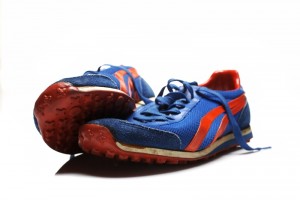“Is yoga a sport?” Years ago, an executive at Adidas found himself pondering this very question. At the time, the sports design paradigm centered on competitive edge and athleticism. But, not every customer is a professional athlete. Where did customers engaged in recreational activities fit?

The “yikes” moment for Adidas was realizing that the industry model was incongruent with reality. After looking at their existing data critically, they still fell short of answering his question. The historical data supported the current paradigm and didn’t reveal any new insights on yoga as a sport.
Adidas turned to Christian Madsbjerg and Mikkel Rasmussen for help. Together they embarked on a new investigative journey. They collected new, largely qualitative data on what drives customers to buy and use their products. They wanted to know what motivated people to participate in sports like yoga, biking, or jogging.
The result of the research was compelling as described in this article, Here's Why Companies Are Desperate To Hire Anthropologists. I’ll give you a hint: being a better athlete wasn’t the answer.
As the world around us changes, so do we. Smart companies, like Adidas, learn how to tap into and capitalize on these changes. Here are some important lessons we can all learn from Adidas:
Challenge the way you view your customer
Today, roughly 20 million Americans practice yoga. If Adidas had refused to expand their view of the customer, they would have missed out what is now a major market. Adidas’ willingness to explore and rethink their customer view led to some major “a-ha” moments. Innovative companies do this regularly. Consider the widespread use of streaming movies and delivery-based services, which bring products directly to our homes. They are now an embedded part of our daily activities, reflecting a major change in customer preferences and expectations.
Be daring but deliberate
Information about important moments, connections, or cultural shifts that influence customer’s preferences and behaviors is critical. This why Adidas sought the help of qualitative researchers who would help them see their customers in context. Adidas chose to spend a day in the life of its customers, by having researchers go with customers to the gym, yoga, or even joining them for breakfast. The data they collected, which included photos and other descriptive data, provided valuable insight into what inspired their customers to be fit and exercise. Kraft used search and proprietary data from observation groups, along with internal website data (kraftrecipes.com) and purchase history to reveal a growing interest in dinner, entrée, and protein based salads. They used this insight to create new content and dinner salad dressing ideas based on the ingredients that the customer showed interest in. Nike and Kraft relied on a variety of data sources, some big data and some “small” data, to derive new customer insights. Both had a very deliberate focus of delivering a better set of products and/or service to their customers.
Mix it up
Observations of people’s behaviors over prolonged periods can be incredibly informative. This kind of qualitative data collection allow you to examine people in many environments and situations to see if there are any patterns. It can tremendously enhance quantitative data you may already have.
For example, imagine using geospatial analysis to see the distribution of recreational sports in a region against current product availability and purchasing trends. Let’s say there is a concentration of yoga product sales in small cities. Meanwhile, trail running products are concentrated in and growing in popularity in medium to large cities. From these visualizations, the following questions emerge:
- Do customers in small cities want to feel they have access to the same services and lifestyle as individuals in larger cities (yoga)?
- Are individuals in large cities trying to escape the grind of urban life while still keeping the same hustle and intensity (trail running and biking)?
- What other conditions or factors are causing an uptick in trail running?
Today, we live in diverse environments that are in constant flux. As knowledge workers, we need to be willing to step outside our familiar methods, tools and processes, if we intend to learn more about how our customers want to do business with us. And the answer to what motivates people? A healthy lifestyle and that is another data story worthy of attention.
